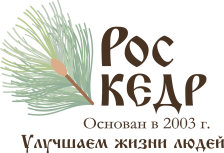All about cedar
What is cedar
About the name “cedar”
The history of cedar
Properties of cedar wood
Application of cedar
Cedar is an energy source
Cedar – king-tree
Cedar Storerooms
Cedar Storerooms
Cedar wood
Cedar resin – oleoresin
Cedar needles
Pine nuts
Different types of cedar
Siberian cedar
Lebanese Cedar
Other types of cedars
Medicinal properties and application of cedar products
Properties of pine nuts
The use of pine nuts
Properties of cedar oil
Application of cedar oil
Treatment with cedar
Cedar in cosmetology
Treatment with cedar – recipes
Cedar is the beauty and pride of the Siberian taiga
Since ancient times, it has been known to use in folk medicine the medicinal properties of nut shells, young tops of shoots, buds, needles, bark, cedar resin. The phytoncidal properties of cedar are amazing. The air in the cedar grove is practically sterile, there are no pathogenic microbes in it. This is due to the disinfecting properties of cedar. Phytoncides have a beneficial effect on the activity of the human heart and nervous system. People who are prone to hysteria, various kinds of nervous disorders, insomnia, it is useful to spend more time in the forest.
Winter expedition to the Altai Mountains. Places of cedar harvesting.
The resin of Siberian cedar was popularly called “oleoresin”, and this, of course, is not accidental. Cedar sap has an incredible ability to heal wounds. Residents of Siberia and the Urals long ago discovered the therapeutic anesthetic properties of oleoresin and used it to treat purulent wounds, boils, cuts, burns. Cedar resin was also used for snake bites. Scientists have confirmed the bactericidal-balsamic properties of oleoresin and noted a number of beneficial features of cedar resin compared, for example, with pine. Cedar sap is less prone to drying out, crystallizes less, and therefore, when applied to the wound, it does not have an irritating effect. The keepers of knowledge claim that the cedar was created by God as a storage of the energy of the cosmos.

Even in a small piece of cedar, “there is more energy than all man-made power plants on Earth combined.” On Earth, trees called cedar perform a certain function, they are capacitors, energy storage of the Cosmos. Since the main distribution area of cedar pine is Siberia, the history of the tree is closely intertwined with the material and spiritual culture of the Urals and Siberia. In the legends and fairy tales of the Nanai people of the Amur region, it is said that only good spirits settle in the Siberian cedar, because it is the most generous tree. The Cossacks who came to the Urals called the cedar pine the “Siberian giant”, and the Tobolsk peasants — the “cherished tree”. For the population of Gornaya Shoria and Gorny Altai, she was a “cow tree” and a “mother tree”.




